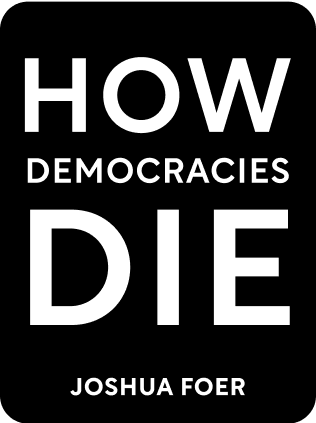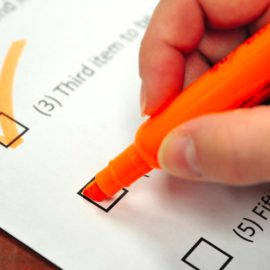

This article is an excerpt from the Shortform book guide to "How Democracies Die" by Steven Levitsky and Daniel Ziblatt. Shortform has the world's best summaries and analyses of books you should be reading.
Like this article? Sign up for a free trial here .
Was fascism a part of Trump’s presidency? What were the signs of fascism and authoritarianism?
Trump was accused of fascism throughout his presidency by those in opposing political parties. Trump and his administration had clear and dangerous signs of authoritarianism.
Read more about fascism, Trump, and authoritarian decisions in his presidency.
Fascism, Trump, and Democratic Norms
Now that we’ve explored the history of democratic norms in US politics and the assault waged on them over the past four decades by an increasingly radicalized Republican Party, it’s time to bring our discussion to the present day.
From his nepotistic appointments of family members to important advisory positions in the White House to his refusal to divest himself from his personal business interests to his seemingly endless stream of lies about matters great and small, when it comes to fascism, Trump has emerged as a serial norm-breaker. The democratic guardrails are coming down, with political behavior once believed to be unthinkable now fully normal within Republican politics.
In this chapter, we’ll delve further into how President Donald Trump has degraded democratic norms while in office and explore the key factors that will determine the survival of democracy in America.
Trump’s Authoritarian Moves
We saw how candidate Donald Trump exhibited all four signs of anti-democratic authoritarianism. How has he behaved since taking office in 2017?
To answer that question, we’ll need to recall the three main tactics used by authoritarian leaders as they move to dismantle democracy. To recap, they are:
- Capturing the referees
- Sidelining opponents
- Changing the rules of the democratic game
As president, Donald Trump has attempted all three. We’ll explore each in greater detail below.
Capturing the Referees: Loyalty Pledges
We can see Trump’s fascist attempt to capture the referees of the American political system—law enforcement officials, judges, and civil servants—in several high-profile incidents. Early in his administration, Trump demanded that FBI Director James Comey—sworn to uphold the Constitution—pledge his personal loyalty and drop the FBI’s ongoing investigation into collusion between the Rusian government and the Trump campaign.
After Comey refused, Trump took the extraordinary step of firing him. This was a move nearly without precedent in US politics and a clear signal that Trump did not intend to respect the customary barrier between politics and federal law enforcement.
Sidelining Opponents: Attacking the Media
In another sign of fascism, Trump also attempted to sideline his opponents through his attacks on the mainstream media. Trump routinely labelled mainstream media, which tended to give unfavorable coverage to his administration, as “fake news.” He argued that the media was inflexibly biased against him and that voters should disregard what outlets like CNN, the Washington Post, and the New York Times reported about his administration.
He viewed the media as his opponents and saw launching these attacks on them as a way to discredit them—and signal to his supporters that he was the only source of truth. This conditions GOP voters to live in an alternative-facts universe, while raising support for various forms of media repression among these same voters.
Changing the Rules: The “Electoral Integrity” Commission
In another show of fascism, Trump has attempted to rewrite the rules of the democratic game through the Presidential Advisory Commission on Electoral Integrity, run by Kansas GOP operative Kris Kobach. The commission’s ostensible aim was to root out in-person voter fraud and clean up America’s election system.
Part of the impetus for this commission sprang from Trump’s oft-repeated (and demonstrably false) claim that millions of fraudulent votes were cast in the 2016 election and that he was the true winner of the popular vote (a belief now shared by nearly half of all Republican voters, demonstrating a disturbing distrust of democracy among the GOP base).
The problem was that there was zero evidence for Trump and his GOP allies’ claims of widespread voter fraud. The true purpose of the commission was to promote the false Republican narrative of voter fraud, encourage the adoption of state voter ID laws, and push for state election authorities to purge voter rolls.
State voter ID laws, passed almost exclusively by Republican-controlled states, have been shown to make it disproportionately harder for poorer and non-white voters to exercise the franchise—i.e., voters more likely to support Democrats. Because voters must go to the trouble of acquiring and paying for these forms of identification, they amount to a 21st-century version of the poll taxes favored by Southern Democrats during the Jim Crow era.
(Shortform note: Trump disbanded the commission in January 2018, after nearly all states refused to hand their voter data over to it. While this was a victory for voting rights, the very existence of the commission speaks to Trump’s willingness to broach democratic norms and attempt to rig the rules in his party’s favor.)

———End of Preview———
Like what you just read? Read the rest of the world's best book summary and analysis of Steven Levitsky and Daniel Ziblatt's "How Democracies Die" at Shortform .
Here's what you'll find in our full How Democracies Die summary :
- How shared norms are essential for preserving democracy
- Why the Trump presidency threatened those shared norms
- Why democracy goes beyond individual leaders and parties and must be a shared enterprise among committed individuals






